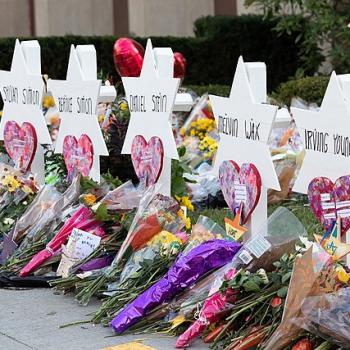 |
|
Die-hard hideout
|
As the country mournfully marked the seventh anniversary of the terrorist attacks of September 11, we must also reflect on the current state of the “war on terror.” In the current presidential campaign, there is a fundamental difference between the two candidiates over the central focus: Senator John McCain continues to call Iraq the “central front” in the war on terror, while Senator Obama has declared that the “real war on terror” is in Afghanistan, and he has even indicated he will attack bin Laden or his associates, without the permission of Pakistan if necessary.
Yet, both of these approaches fall completely short. The war against the terrorists, which should replace the term “war on terror,” is a multi-faceted conflict with many fronts: ideological, financial, legal, and yes, military, and each front needs to be given equal attention. So far, the United States has focused the fight almost entirely on the military front, and as the RAND corporation has said in its recent report, “the US strategy of [military force as the primary instrument] was not successful in undermining al Qa’ida’s capabilities.” In fact, according to RAND, only 7 percent of terrorist groups have ended by military force.
In fact, it is quite clear from the past 6 years that a sole military approach to counterterrorism is an abysmal failure. The war in Iraq – the alleged “central front of the war on terror” – has not made the country safer. In fact, according to an American intelligence official who was quoted by the New York Times in 2006, the Iraq war “has made the overall terrorism problem worse.” That official was relaying the findings of the 2006 National Intelligence Estimate.
Indeed, the Iraq war was a disastrous diversion from the war against the people who actually attacked us on September 11, 2001: the terrorists of Al Qa’ida. While the United States was bogged down in the subsequent Iraqi insurgency that started after President Bush declared “mission accomplished,” Al Qa’ida regrouped and entrenched itself in the mountainous region between Afghanistan and Pakistan. In addition, they have linked up with the resurgent Taliban and have created havoc in both Pakistan and Afghanistan. It is imperative that our focus returns to Afghanistan, where it should have been all along.
Yet, what should be done about the fighters that are entrenched in the NWFP and South Waziristan? History has shown that no one – neither Alexander the Great, nor the British, nor the Soviets – has been able to conquer the “lawless” region between Afghanistan and Pakistan. The Pakistani military has not had any success, either, suffering enormous losses in recent fighting with the militants. So, does this mean abandoning the military option altogether? No.
We should not be looking to occupy the NWFP and Waziristan militarily; our goal should be to flush out the terrorists from that area and deny them a safe haven there. This will not only protect the United States, but will also bring increased stability to both Pakistan and Afghanistan, which have bore the brunt of the attacks from the Taliban and Al Qa’ida. Yet, how?
Targeted military strikes seem to be an enticing option. No costly invasion of foreign lands is necessary, and we can take out militants as actionable intelligence on their whereabouts surfaces. In fact, according to recent news reports, President George W. Bush has authorized such military raids, even if it is inside Pakistani territory, and one such raid has already been conducted on September 4. Yet, as recent events have borne out, this strategy can be frought with danger.
The Pakistani government has fiercely condemned the September 4 raid and all such military activities on Pakistani soil. Pakistani Ambassador to the US Hussain Haqqani told Reuters, “In our bilateral discussions, no such idea has been mooted and will certainly not be accepted by Pakistan.” The Pakistani government, already widely considered to be weak, is concerned about the internal repercussions of allowing foreign troops fighting on their soil, even if it is against terrorists who have shown no hesitancy to kill Pakistani civilians. In fact, the Pakistani Army has recently said that their troops have orders to open fire if foreign forces enter Pakistan, which reportedly has already happened.
Now, on one level, we should really not be concerned with the internal politics of Pakistani society when it comes to defending our country against terrorists who, if given the opportunity, would massacre as many innocent Americans they can. At the same time, however, such military strikes can prove to be counterproductive. Case in point: the American airstrike on August 22 in Afghanistan. The US military has claimed that 30-35 militants were killed, and only 5-7 civilian casualties resulted. New evidence has emerged, however, disputing that claim, and it may be that more than 90 civilians – the majority women and children – were killed by the Special Operations mission backed by American air support.
Every time innocent civilians are killed by US military operations, it can strengthen, not weaken, the Taliban and Al Qa’ida, who can use such incidents are recruitment propaganda. The district chief of Shindand, Lal Muhammad Umarzai said about the incident, “This is not fair to kill 90 people for one Mullah Sadiq [the apparent target of the raid]. If they continue like this, they will lose the people’s confidence in the government and the coalition forces.” And substituting Afghan or Pakistani forces for American ones, as the RAND corportation has suggested, is likely not the answer either, because they will likely be seen as “tools” of the Americans.
Herein is the major dilemma. If it seems that the military option, so far, is not achieving the objective of defeating Al Qa’ida, what are we to do against the small number of “die hard” militants who will never be convinced that their version of “jihad” is satanic in nature? They cannot be negotiated with, and it seems that military confrontation must be the only option to defeat them. That military action has to be coupled with proper and precise intelligence. Indeed, precise intelligence work should be the backbone of the effort to defeat the “fight-to the-death” militants.
Presumably, it can be argued that we are using intelligence in our fight against the terrorists. But, as the run up to the Iraq war has shown, intelligence can be manipulated, misused, or even fabricated, as Ron Suskind’s new book suggests. In addition, intelligence assets upon which we rely can be terribly inaccurate. In fact, referring to the Aug 22 air strike in Afghanistan, President Hamid Karzai has vowed to arrest the Afghan whom he claims misled US forces who conducted the raid. No, these fighter groups must be infiltrated from within and destroyed, and this means using real, living, breathing human beings who can do so.
Yet, it will not be easy to find and recruit intelligence assets who would be willing to infiltrate terrorist cells and destroy them from within. Taking on such a role involves an enormous amount of personal risk, because it is likely that – if revealed that they are indeed spies – they will be tortured and killed as collaborators. Furthermore, these intelligence assets, if successful in their mission, will likely not be safe returning to the communities from which they came. Thus, they must given support and perhaps even placed in a sort of “witness protection program.” They must never be betrayed by being later prosecuted for providing “material support for terrorism” if they were doing so at our bidding.
Of course, this has to be in concert with other efforts, such as economic development, honest governance, and a full blown “spiritual offensive” against the terrorists, such as the recent Deoband Declaration. That way, the pool of potential recruits, as well as possible tacit support of the local population, can continue to dwindle to nothing. Yet, this will not stop the “die-hards,” and so their cancer must be infiltrated from within and killed. A tough fight, but one that must be waged.
Hesham A. Hassaballa is a Chicago physician and writer. He is the co-author of “The Beliefnet Guide to Islam,” published by Doubleday in 2006. His blog is at godfaithpen.com.











